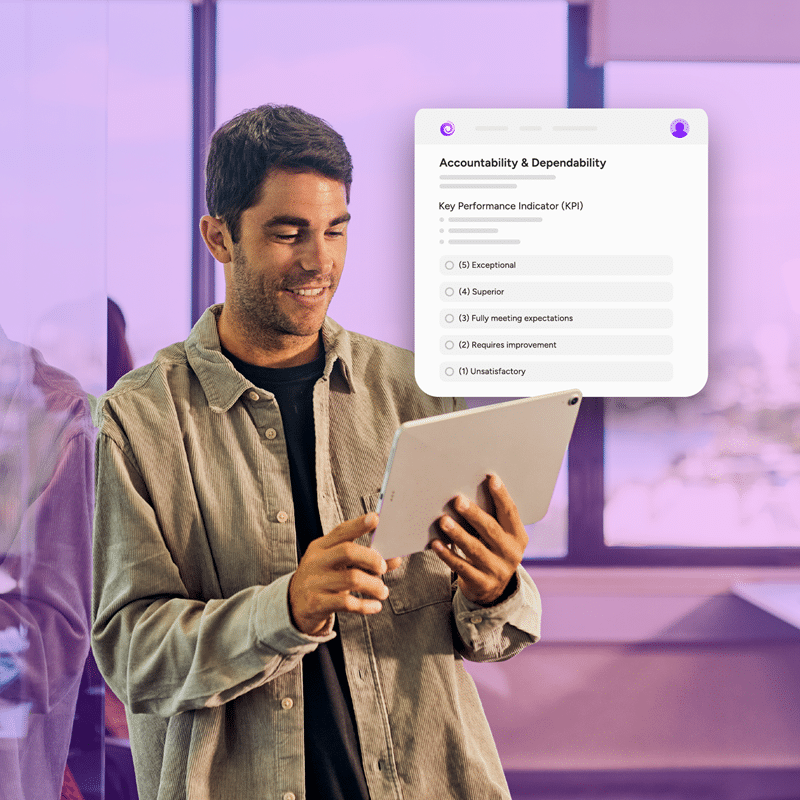
Cloud-based, exceptional employee experience
Control every aspect of your employee portal and know your information is safe. We use Amazon Web Services for their speed, reliable access and industry-leading data security. With features such as Multi-Factor Authentication (MFA), secure login, industry-standard encryption and variable permissions, you have the flexibility to determine what your people can see, modify, and upload.
The nuts and bolts behind our employee self service software

Effective workforce management helps businesses maintain HR compliance
By simplifying tasks like scheduling, payroll, and employee data management, Citation HR helps businesses stay audit-ready and reduce risks. With the right tools and expert support, you can align your operations with HR standards, boost efficiency, and achieve peace of mind.
Got burning questions? We’ve got answers
Employee Self Service (eSS) is a digital platform or HR portal that allows employees to access and manage their personal and work-related information without needing to go through HR or administrative staff. eSS systems are typically part of a company’s Human Resource Management System (HRMS) or payroll software.
With an eSS portal, employees can perform tasks such as:
- Viewing and updating personal information (e.g., address, contact details, emergency contacts).
- Accessing pay stubs, tax forms, and benefits information.
- Submitting time-off requests or annual leave applications, and viewing leave balances.
- Viewing work schedules and tracking attendance.
- Enrolling in training programs or benefits plans.
- Accessing company policies, announcements, and other resources.
eSS streamlines HR processes, reduces administrative workload, and empowers employees by giving them direct control over their information. It also enhances transparency and improves the overall employee experience, job satisfaction, and compliance.
Employee Self Service (eSS) benefits both HR and employees by streamlining processes and enhancing efficiency. For HR, it reduces administrative workload, improves data accuracy, lowers costs, and ensures compliance by automating routine tasks like updating records and processing leave requests. Employees gain convenience, control, and transparency, with 24/7 access to personal information, pay stubs, and benefits. eSS empowers employees to manage their own data, resolve issues quickly, and stay informed, fostering trust and engagement while enabling HR to focus on strategic priorities.
Here are the core features of eSS software and the benefits they bring to both employees and HR teams:
Features:
- Personal information management: update contact details, emergency contacts, and bank info.
- Payroll access: view pay stubs, tax forms, and salary details.
- Leave and attendance management: submit time-off requests and track leave balances.
- Benefits enrollment: enroll in or modify benefits plans.
- Document access: download policies, tax forms, and navigate training materials.
- Work schedule management: view shifts and schedules.
- Communication tools: users can access and engage with company announcements and updates.
Benefits:
- Saves time for HR professionals and employees.
- Its user-friendly nature reduces errors and paperwork.
- Empowers employees and managers with self-service.
- Enhances transparency, engagement, and workforce efficiency.
Yes, employees can access their payslips through Employee Self Service (eSS). Most eSS platforms include a payroll system feature that allows employees autonomy to securely view, download, and print their payslips, as well as access tax forms and salary details, anytime and anywhere. This eliminates the need to request payslips from HR, saving time for both employees and HR teams while ensuring quick and convenient access to important payroll and organisation information.
Yes, employees can submit leave requests through Employee Self Service (eSS). Most eSS platforms or eSS apps include a leave and attendance management feature, allowing employees to request time off, check leave balances, and track approvals directly through the portal. This streamlines the process, reduces paperwork, and ensures faster approvals, benefiting both employees and HR teams.
Employee Self-Service (eSS) enhances employee engagement by providing employees with greater control and transparency over their work-related information. Key ways eSS enhances engagement include:
- Convenience: employees can access personal data, pay stubs, and benefits anytime, fostering trust and satisfaction.
- Autonomy: eSS allows employees to manage tasks like updating details or submitting leave requests, reducing dependency on HR.
- Transparency: clear visibility into schedules, benefits, and policies builds confidence and reduces confusion.
- Communication: access to company updates and resources keeps employees informed and connected.
- Efficiency: faster resolutions and the ability to configure case management insights for routine tasks improve the overall employee experience, leading to higher morale and engagement.
The key difference between Employee Self Service (eSS) and Human Resource Information System (HRIS) lies in their purpose and functionality:
- eSS (Employee Self Service):
- A feature or portal within an HR system that allows employees to manage their own information.
- Focuses on empowering employees to perform and complete tasks like updating personal details, accessing payslips, submitting leave requests, and enrolling in benefits.
- Designed for employee convenience and engagement.
- HRIS (Human Resource Information System):
- A comprehensive system used by HR teams to manage all aspects of human resources, including payroll, recruitment, compliance, and performance management.
- Focuses on centralising HR data and streamlining HR operations.
In short, eSS is employee-facing, while HRIS is HR-focused.





